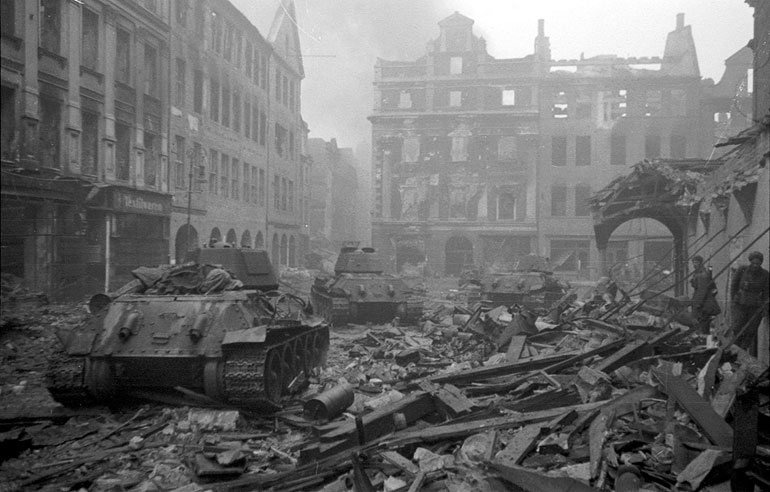
History: Fall of the Third Reich
By 1945 the German Army was a beaten force. It could not surrender, damned by Hitler’s orders to fight to the last man and the Allies’ demand for an unconditional surrender that the Nazi Party could not accept. The war ground on as the Russian armies approached from the east, targeting Berlin itself, and the western Allies fought through the concrete defences of the Siegfried Line, another vaunted static defence line that failed to hold. Hitler launched his final desperate offensives, mustering the last of the Panzer forces for an attack in the Ardennes and later a counter-offensive in Hungary, all to no gain.

Operation Watch on the Rhine
The last great offensive in the west, Operation Watch on the Rhine was a large attack launched through the hilly and forested Ardennes, designed to split the British and American forces and capture the major Allied supply port at Antwerp. The German Army mustered the last of its carefully husbanded Panzer divisions for an overwhelming attack under the cover of bad weather that grounded the Allied fighter-bombers. The move was so ambitious, unexpected, and carefully prepared and executed that it caught the Americans by surprise. But, as the winter weather closed in, the offensive ground to halt with more US forces being rushed to block the initial breakthrough. By January 1945 the German forces had retreated back across their border again, having failed to achieve their objectives.
Holding the West Wall
The Siegfried Line, or West Wall, defended Germany’s western border. A solid line of bunkers and pillboxes, with dragon’s teeth anti-tank defences and minefields, it was a static defence line, manned by poor quality troops, but backed up by the remaining Panzer units ready to counter-attack any threatened breech in the fortifications. The weight of American and British attacks would eventually see it overrun as they pressed on into Germany itself.

Operation Spring Awakening
In March 1945 Hitler made a last desperate attempt to arrest the remorseless advance of the Red Army across Hungary, and ordered Operation Frühlingserwache (Spring Awakening), utilising the 1st and 6th Waffen-SS Panzer Division in the last German offensive of the war, targeting Russian forces in Hungary. The plan was to recapture Budapest and keep Hungary (a German ally) in the war. Massively over-ambitious
for the actual forces available, powerful though they still were, it completely failed.
The Last Levy
The German Army was reduced to tatters. As the Red Army closed in on Berlin and the British and American Armies continued their advance through Germany from the west, Hitler was forced to turn to any forces he could muster. By now the German Army had been torn to pieces, and many units were surrendering en masse. Any man that could be conscripted was. Old men, young boys, the sick and previously wounded, were given Panzerfausts and any other weapons that could be found and expected to fight. These Volkssturm units were little more than ill-trained militia, equipped with bicycles and sometimes antique rifles. Only a few veterans remaining to bolster the crumbling front lines. Still, they extracted a heavy toll from the Red Army during the Battle for Berlin before the final surrender that ended the war in Europe.









